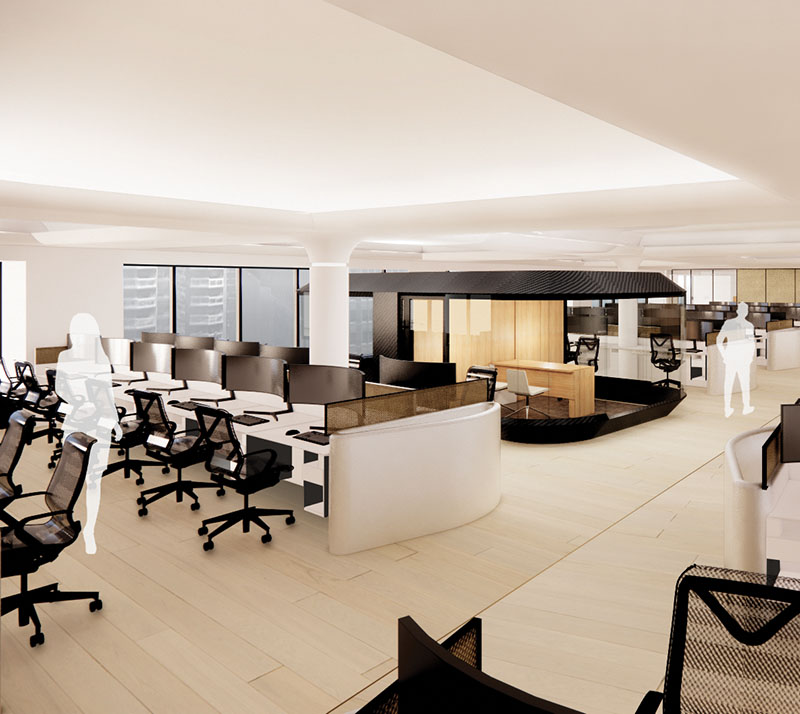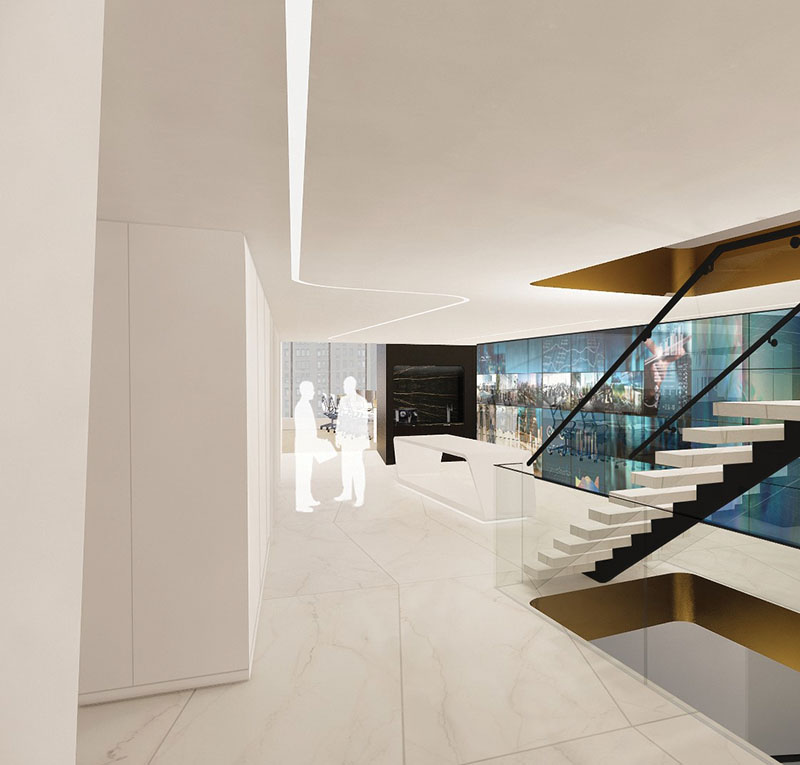
New York, NY The New York Real Estate Journal (NYREJ) sat down with Thomas Vecchione of Vocon,
our executive of the month, for a question and answer session.
Vecchione is a strategic design expert with more than 30 years of experience in architecture and real estate planning. He is acknowledged by the industry as an innovator in real estate strategy, and specifically for his ability to creatively rethink and reposition assets to support the changing needs of property owners and space users. Vecchione’s skill has been especially critical during the past six months as owners and occupiers have struggled to make sense of a continually shifting landscape. He was the first to develop an industry playbook that embraced the new reality and provided best practices and professional guidance for office occupancy, and he is now working with a host of property owners and corporations as they adapt to new circumstances.
The core of Vecchione’s work is based on the belief that impactful design enhances business performance and employee engagement. His approach to projects couples research and trends with a deep understanding of an organization’s goals and structure, creating bespoke and flexible environments for his clients. We asked Vecchione to explore the current environment as he continues to pursue innovative strategies that bring forward-thinking concepts to the market.

NYREJ: How will the workplace change in the post-COVID environment?
Vecchione: Corporate space use will undoubtedly change as a result of the current pandemic. The office will become a center of excellence and a hybrid environment that can accommodate both on-site and off-site employees. Businesses have learned to engage their workforce remotely over the past seven months, and high performance talent will desire increased flexibility moving forward. A recent survey conducted by Vocon shows that 27% of employers are providing employees with the flexibility to choose where they work based on their work needs and schedule, and 44% of business leaders anticipate that 50% or more of their workforce will work remotely two or more days per week after the COVID threat has passed.
In today’s environment, mid-size office space is in focus. We are collaborating with building owners to reinvent the pre-built office model, designing business-ready suites, and building discrete co-working clubs. The workplace will have new components that make coming to work an elevated experience, including streamlined drop-off points for food delivery, fresh kitchens for pop-up chefs, automated food service, completely flexible meeting areas, and interactive digital technology embedded into windows and office fronts.
I have been working closely with building owners to position properties by including signature assets and communicating hyper-optionality for tenants. The top landlords are taking this moment to deeply understand their buildings from the employee and corporate leadership viewpoints. Vocon is collaborating on a number of large innovative projects in Boston, DC, Charlotte, and of course throughout New York City in Madison Square Park, Grand Central, Hudson Square and Hudson Yards that are really pushing the boundaries to deliver inspiring and high performance buildings to existing and prospective tenants.
The requirements of office space are not holistically changing from what we have seen and are planning to date. Our clients are still planning to typical densities at around 150 s/f per person for the long term with employee workweek schedule programs to accommodate distancing requirements with every other desk occupied. We have also seen some clients dedicate areas to reservable seats and institute a clean desk policy. Another subset of clients is focused on adding more private offices for deep focus work and growing towards 300 s/f per person. We have yet to see the true lasting impacts to office planning metrics as different tenants have a variety of viewpoints.

NYREJ: Will the office maintain a critical role in business?
Vecchione: The short answer to this question is yes! The office is, and will remain, critical to successful corporate enterprises. The purpose of the workplace will shift, however, at least in the near- to mid-term, to a destination that is intended to connect employees, allowing them to socialize, collaborate, brainstorm, host visitors, and onboard and mentor new employees. The office will need to be a center of excellence, a hybrid environment for on-site and off-site employees. Gathering together in an office makes collaborative tasks much easier in the same way that remote work may be ideal for solitary efforts that require concentration or privacy, such as reading or research, individual deep focused work while also participating in video conference or telephone conversations.
Many companies already have identified specific departments that perform better when operating within the office and they are seeking to facilitate workplace re-entry for these groups while not pushing for the return of other employees whose productivity has held steady outside the office. The new operating paradigm that will include working remotely as well as working within an office that has been optimized to support purposeful interactions, collaboration, engagement, training and company culture.
NYREJ: Is remote work the new reality?
Vecchione: Office building occupancy in many cities remains low. New York City occupancy has hovered around 10%, while other cities nationally are seeing occupancy in a range of between 20 to 40%. These numbers will likely continue until a vaccine is fully deployed. Employers fully recognize this. At the same time, however, companies want to bring employees back to the office. This is not surprising given the Vocon survey, which showed a significant increase in work-from-home fatigue and a decrease in work-from-home productivity. The survey reveals that 40% of business leaders report a decrease in productivity while working remotely and 25% report work-from-home fatigue. This is a significant shift from an April 2020 Vocon survey, in which 56% of business leaders rated productivity as “excellent.” While the workplace in the future will be a mix of in-person and remote work, the current work-from-home situation is undermining basic operations for many businesses.
Employers are focused on retaining a strong work culture, keeping employees connected, and training and integrating new talent – all of which benefit greatly from in-person interactions. As the landscape continues to shift, we will see further evolution in thought about remote work and the meaning of the workplace. Each business leader is faced with a host of considerations, and they must select the solution that works for their circumstances. Every organization must customize its own approach. Many businesses have experienced the downsides of remote work, and they are actively seeking to address circumstances to maintain their ability to serve clients.
